This week is National EMS Week! To celebrate, we wanted to shed light on some of the amazing first responders throughout Berks County and surrounding areas, as well as the animals that keep them motivated to help save lives!
First, we have Sarah Galbraith, an EMT for Western Berks Ambulance Association whose favorite companion is her cool cat, Randy Savage!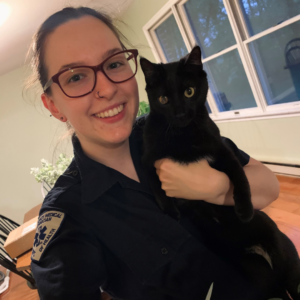
- Tell us a little bit about you and your pet.
- “Hello! My name is Sarah Galbraith. I’m an EMT for Western berks and I’m the proud Mom of a cute little 2-year-old cat named Randy Savage. Randy’s favorite activity is laying inside the window to watch birds and bunnies. We have to make sure our screens are properly secured at all times lol.”
- How did you find your pet, or should I say how did your pet find you?
- “About 2 years ago, I felt like I was stuck in a rut and usually felt very alone. I went to the local shelter to consider a pet and saw Randy. I fell in love instantly. He was found as a stray and brought in. He was sick at the time so he was separated from the other cats and he had a scar on his eye. They were guessing he was about 3 months old so he was still pretty small. I’ve always loved black cats so when I saw him, I just knew that I couldn’t leave without him. Best decision I ever made.”
- After a long day on the job, what does your pet provide for you?
- “My cat comes and greets me at the door when I come home no matter what time it is. This is something that sounds so minuscule but I look forward to it every day. Just hearing him run down the steps to see me always puts a smile on my face, no matter how my day went!”
- When you have had to deal with a more difficult call or encounter, how does your pet help you cope?
- “My cat is generally like your stereotypical cat. Everything is on his terms. The majority of the time he just stares at us from far away, judging. But I think animals can sense our moods and know when something is off. There are days that I come home feeling so defeated and don’t want to deal with anything but then Randy comes and greets me. He’ll stick around and stay close to me. He’ll convince me to play with him and without even realizing it, I’ll start to feel better. He’ll remind me that I have to feed him so then I’ll make sure to eat as well. Caring for him reminds me to also care for myself.”
- Have you ever experienced any animal encounters on the job?
- “I love when there are animals on a call! Well, friendly ones at least. I find it interesting to see what kind of pets people have!”
- Have you ever had any positive personal or professional experiences with Humane Pennsylvania/Humane Society of Berks County?
- “I, unfortunately, have not but I look forward to their opening. I’m thinking about getting Randy a friend :).”
Next, we heard from Platoon Shift Supervisor for the City of Allentown, part-time Paramedic with the Wester Berks Ambulance Association, and dog dad to 3 amazing pups, Philip Banks!
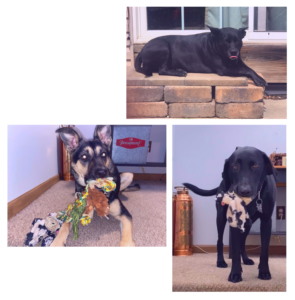 “Being part of the EMS life is harder than most can handle! You see people at perhaps the worst times in their lives — when they are extremely sick, injured, facing death, or even when they are at rock bottom. Most times the comfort you provide, besides the medicine and treatment, is all people need. When I come home from my shifts, it takes a while to unwind and clear my mind from everything that’s been encountered in my shift. I come home and before I can get the door open, my pups — Koda, Bella, and Hunter — are usually whining and crying because they can’t wait for me to come in!
“Being part of the EMS life is harder than most can handle! You see people at perhaps the worst times in their lives — when they are extremely sick, injured, facing death, or even when they are at rock bottom. Most times the comfort you provide, besides the medicine and treatment, is all people need. When I come home from my shifts, it takes a while to unwind and clear my mind from everything that’s been encountered in my shift. I come home and before I can get the door open, my pups — Koda, Bella, and Hunter — are usually whining and crying because they can’t wait for me to come in!
As soon as the knob is turned, there are noses sticking out the crack of the door. After dinner and some playtime with the pups, it’s time for bed. They can never sleep close enough! They surround me and lay so close to me with their heads on my chest! The love and affection they provide, perhaps knowing the things I see during shifts, makes it so easy to drift off and sleep! It’s truly something I look forward to every day when I get home from work.”
We also heard from Teresa Weaver, Owner/Handler of Skip – a certified KPETS Therapy Dog. Skip provides comfort to first responders in crisis!
“Skip is a purebred Golden Retriever, born in July 2016. I’ve had Skip since he was a puppy and have been his trained KPETS handler since he was one year old. His acquired specialty is being a first responder and crisis therapy dog. Below are a few of the activities with which Skip has been involved:
- Frequent visits to local fire, ambulance, hospitals, and police stations.
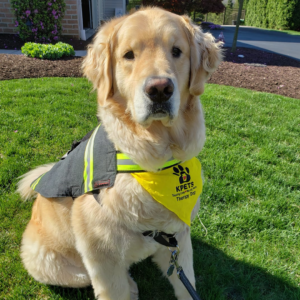
- Crisis events for First Responders & Emergency Room Staff.
- Community service events with fellow first responder friends.
- Crisis response events for several high schools that have dealt with student deaths
- Emotional support programs for at-risk youth.
- Berks County DA Office/Children’s Alliance Forensic staff visits and special request assignments
- Assemblies at local elementary schools with Reading Fire Department & Berks County Sheriff’s Department to help educate children on the various purposes of working dogs.
Skip does so much to bring joy to people in the community and I am so honored to be his dog mommy!”
Finally, Kristin Racis, EMT-B at Western Berks Ambulance Association, shares her favorite things about her furry companion, her dog Keeley!
- Tell us a little bit about your pet.
- “Keeley. She just turned 3 years old on May 9th. Keeley is a Pitbull mix. Keeley loves being outside. Whether it is for a hike/walk, doing yard work around the house, playing, or simply just lying in the sun. As long as she is outside, she has no care in the world!”
- How did you find your pet, or should I say how did your pet find you?
- “I adopted Keeley my senior year of college when she was 6 months old. I found her at a rescue shelter online. They adopt and foster their dogs out to the east coast for a greater chance of a new home. They shipped Keeley to me and I picked her up in Harrisburg. Adopting Keeley was the best decision of my life. She helps me in so many aspects of life, she doesn’t even know!”
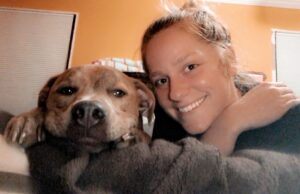
- “I adopted Keeley my senior year of college when she was 6 months old. I found her at a rescue shelter online. They adopt and foster their dogs out to the east coast for a greater chance of a new home. They shipped Keeley to me and I picked her up in Harrisburg. Adopting Keeley was the best decision of my life. She helps me in so many aspects of life, she doesn’t even know!”
- After a long day on the job, what does your pet provide for you?
- “Working EMS can be a very stressful job at times. We see people in their most vulnerable state. A day or night of work can be tough. I think one of the reasons why I wake up every day and continue to serve my community and help people in need is because of my dog. She instantly gives me peace of mind and makes me forget about everything bad that happened as soon as I walk through the door. Just the instant smile, love, and happiness she provides as soon as she sees my face just lights up my world — there’s no other explanation. She is a great company. I think everyone who can, should invest in some type of animal. They really are great for emotional support.”
- When you have had to deal with a more difficult call or encounter, how does your pet help you cope?
- “Dealing with difficult calls with the job and happen almost every day. Keeley helps me by distracting me. Her love, her kisses, her wanting to play and go on walks. All of this helps me clear my mind and let go of that day’s stress and worries. She greets me and jumps on me and is just so excited to see me. It’s like she hasn’t seen me in weeks! It’s another reminder that I am cared for and I am needed.”
- Have you ever experienced any animal encounters on the job?
- “I have not experienced any encounters on the job where an animal needed help, but have heard stories and they seem very tough.”
- Have you ever had any positive personal or professional experiences with Humane Pennsylvania/Humane Society of Berks County?
- “No, I have not had any encounters at all with Humane Pennsylvania/Humane Society of Berks County but I am looking forward to visiting the new building in the future.”
Thank you to all of the first responders that put their life on the line in order to save ours! Your hard work and dedication do not go unnoticed and we’re so happy you have furry friends to help you get through the toughest of days! If you or anyone you know is in need of a companion as amazing as the few mentioned above, please visit us at https://humanepa.org/adoption/.


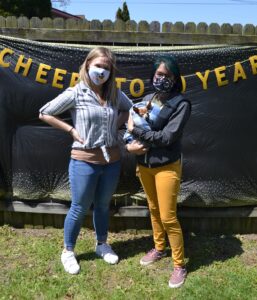 started here and I had no experience. I worked in retail prior to coming here. I had pets growing up, but no experience with animal welfare, and she really molded me into what I am now. And of course, Leann. She has helped me grow so much, from working as a tech to now being in a managerial position. It’s something that I didn’t even know I could do, but she helped me grow and helped me make decisions that led to my continued growth within the organization.
started here and I had no experience. I worked in retail prior to coming here. I had pets growing up, but no experience with animal welfare, and she really molded me into what I am now. And of course, Leann. She has helped me grow so much, from working as a tech to now being in a managerial position. It’s something that I didn’t even know I could do, but she helped me grow and helped me make decisions that led to my continued growth within the organization. My favorite would have to be Vincenzo! He is an FIV (Feline Immunodeficiency Virus) positive cat that has been with us for a little while. He came to us after a caretaker outside of the shelter noticed that he had some pretty severe wounds and his eyes were not in the best condition. I really loved watching him come around. He was so shy when he first got here and now he just makes biscuits everywhere. I love him. He’s so sweet and, after months of medical care, he’s finally ready for adoption.
My favorite would have to be Vincenzo! He is an FIV (Feline Immunodeficiency Virus) positive cat that has been with us for a little while. He came to us after a caretaker outside of the shelter noticed that he had some pretty severe wounds and his eyes were not in the best condition. I really loved watching him come around. He was so shy when he first got here and now he just makes biscuits everywhere. I love him. He’s so sweet and, after months of medical care, he’s finally ready for adoption. The louder it got the more she started to shake. I placed her on a big fluffy comforter, opened her cage door, and placed her information card in the slip on the front of her cage door. She sat up, looked in the direction of the door, and ran outside. I made it a point to walk past her kennel several times that day to see if she was acclimating okay. Each time I saw her curled up in the outside part of her run, I walked around and placed a blanket on that side to make sure she remained comfortable. “You don’t want to lay on the hard cement, Anastasia.” She stood up and walked as far away from me as she could.
The louder it got the more she started to shake. I placed her on a big fluffy comforter, opened her cage door, and placed her information card in the slip on the front of her cage door. She sat up, looked in the direction of the door, and ran outside. I made it a point to walk past her kennel several times that day to see if she was acclimating okay. Each time I saw her curled up in the outside part of her run, I walked around and placed a blanket on that side to make sure she remained comfortable. “You don’t want to lay on the hard cement, Anastasia.” She stood up and walked as far away from me as she could. think of the vital role animal care volunteers play as fairly simple, but as a community-supported charitable organization, volunteers serve in so many other ways. Our volunteer board of directors helps guide the mission and vision of Humane Pennsylvania and ensures stewardship of our donor resources. Event and fundraising volunteers help connect Humane Pennsylvania with people in the community who want to support our work. Professional service providers — ranging from attorneys to mechanics to builders — help us stretch our dollars so we can put the most into care for the animals. There is no part of our work that is not touched and improved through volunteer efforts and I am truly grateful to work with all of these dedicated animal lovers!”
think of the vital role animal care volunteers play as fairly simple, but as a community-supported charitable organization, volunteers serve in so many other ways. Our volunteer board of directors helps guide the mission and vision of Humane Pennsylvania and ensures stewardship of our donor resources. Event and fundraising volunteers help connect Humane Pennsylvania with people in the community who want to support our work. Professional service providers — ranging from attorneys to mechanics to builders — help us stretch our dollars so we can put the most into care for the animals. There is no part of our work that is not touched and improved through volunteer efforts and I am truly grateful to work with all of these dedicated animal lovers!”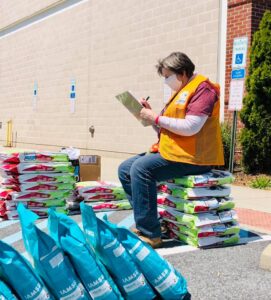 “
“ caregivers as part of the Healthy Pets Initiative (HPI). A vital function of the facility is a tactile presence to verified clients who stop by Spike’s Pet Pantry as they pick up supplemental pet food and supplies, learn about our services, and come to trust us as their “pet partner”. Volunteers keep our program running efficiently by performing regular, timely data entry, sort/prepare pet food/supplies on pantry days and pick up pet food/supply donations throughout the community. We also rely on them to help us unload and distribute tractor-trailers full of donations from the Greater Good Affiliate Program and other high volume donors so we can share resources with other animal welfare organizations, including state/county animal response teams. Volunteers graciously extend their existing relationships with valuable, pet-friendly individuals and businesses to encourage, create and maintain local engagement and support of HPI events (community vaccination/microchip clinics, etc.) and programming. When existing, more fortunate pet owners truly understand our mission to improve local pet care and ownership habits, they become an integral part of achieving our goal to be the best community for pets and their owners. For these reasons, we are beyond grateful for the volunteers that continue to help make Humane Pennsylvania an amazing organization for animals and animal caretakers.”
caregivers as part of the Healthy Pets Initiative (HPI). A vital function of the facility is a tactile presence to verified clients who stop by Spike’s Pet Pantry as they pick up supplemental pet food and supplies, learn about our services, and come to trust us as their “pet partner”. Volunteers keep our program running efficiently by performing regular, timely data entry, sort/prepare pet food/supplies on pantry days and pick up pet food/supply donations throughout the community. We also rely on them to help us unload and distribute tractor-trailers full of donations from the Greater Good Affiliate Program and other high volume donors so we can share resources with other animal welfare organizations, including state/county animal response teams. Volunteers graciously extend their existing relationships with valuable, pet-friendly individuals and businesses to encourage, create and maintain local engagement and support of HPI events (community vaccination/microchip clinics, etc.) and programming. When existing, more fortunate pet owners truly understand our mission to improve local pet care and ownership habits, they become an integral part of achieving our goal to be the best community for pets and their owners. For these reasons, we are beyond grateful for the volunteers that continue to help make Humane Pennsylvania an amazing organization for animals and animal caretakers.” 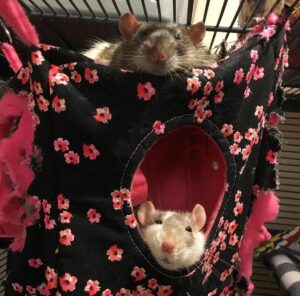
 They also know how to be gentle. Rats have very strong sharp teeth and, just like a dog or cat, can really do some damage if they want to! But their teeth are also extremely sensitive, and they use them to explore just as much as we use our hands. When a rat uses its teeth on something, it is immediately calculating what it’s biting into and how much pressure to use to avoid damaging it. I am consistently amazed at how my rats can so gently take a sesame seed out from between my fingers with their teeth, all while barely touching my skin.
They also know how to be gentle. Rats have very strong sharp teeth and, just like a dog or cat, can really do some damage if they want to! But their teeth are also extremely sensitive, and they use them to explore just as much as we use our hands. When a rat uses its teeth on something, it is immediately calculating what it’s biting into and how much pressure to use to avoid damaging it. I am consistently amazed at how my rats can so gently take a sesame seed out from between my fingers with their teeth, all while barely touching my skin.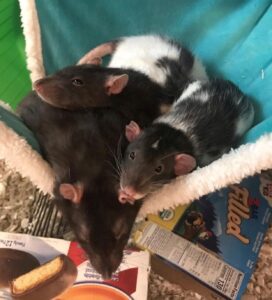

 fees to garner the attention from the public in hopes of increasing their adoptions. They are typically held on weekends, but some are during the week. They can last anywhere from a day to even a week or month. While these events are generally held on site at the shelter there are some that are held off site. The shelter will tie in a theme like holidays, big events (like the start of school), current events or movies, etc. to help draw attention and make the event more fun. Fundraising plays a huge part to cover costs to hold the event and cover the adoption costs. If you are interested in sponsoring one of our adoption events you can contact our Director of Development, Lauren Henderson, at
fees to garner the attention from the public in hopes of increasing their adoptions. They are typically held on weekends, but some are during the week. They can last anywhere from a day to even a week or month. While these events are generally held on site at the shelter there are some that are held off site. The shelter will tie in a theme like holidays, big events (like the start of school), current events or movies, etc. to help draw attention and make the event more fun. Fundraising plays a huge part to cover costs to hold the event and cover the adoption costs. If you are interested in sponsoring one of our adoption events you can contact our Director of Development, Lauren Henderson, at 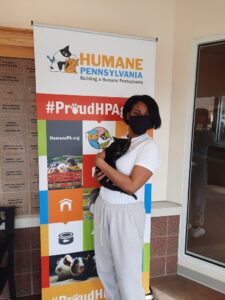 Be patient and expect to wait a little longer when coming to the shelter during a promotion. There may be lines or more traffic than normal. Especially with current restrictions on the number of people allowed inside our shelter at one time due to the pandemic you may need to wait outside or in your car throughout parts of the process.
Be patient and expect to wait a little longer when coming to the shelter during a promotion. There may be lines or more traffic than normal. Especially with current restrictions on the number of people allowed inside our shelter at one time due to the pandemic you may need to wait outside or in your car throughout parts of the process.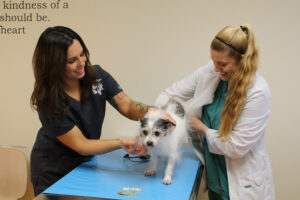
 model now, but it helped kill off Blockbuster.
model now, but it helped kill off Blockbuster.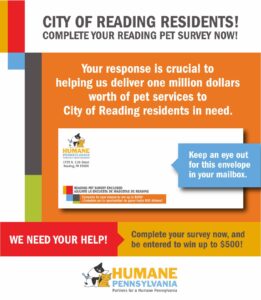
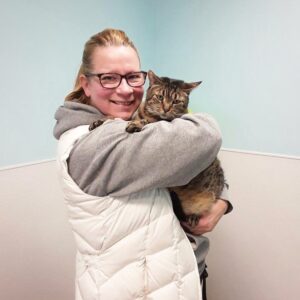 you adopt, you aren’t just changing the life of the animal you will be taking home, but you will also change the life of the animal who needs that open space in the shelter.
you adopt, you aren’t just changing the life of the animal you will be taking home, but you will also change the life of the animal who needs that open space in the shelter.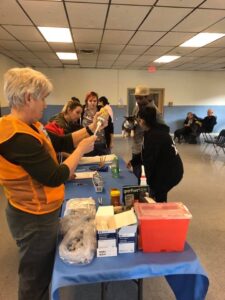 showing up in the snow, rain, and hot summer to walk, play, and train our dogs. Thank you for coming in regularly to help clean the cages alongside our busy staff, with a big smile on your face while giving chin scratches to a cat that hissed at you the week prior. Thank you for answering phones, greeting adopters, and staying long hours just to help the staff assist our community. Thank you for wearing your heart on your sleeve and helping us continue to do the work we all love at Humane Pennsylvania. Thank you. Thank you. Thank you.”
showing up in the snow, rain, and hot summer to walk, play, and train our dogs. Thank you for coming in regularly to help clean the cages alongside our busy staff, with a big smile on your face while giving chin scratches to a cat that hissed at you the week prior. Thank you for answering phones, greeting adopters, and staying long hours just to help the staff assist our community. Thank you for wearing your heart on your sleeve and helping us continue to do the work we all love at Humane Pennsylvania. Thank you. Thank you. Thank you.”